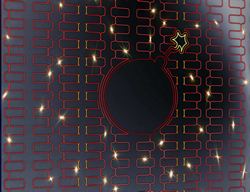Quantum optics on a chip
Photons offer a promising way to exploit quantum phenomena since they do not suffer from strong coupling with the external world. Quanta of light also benefit from many degrees of freedom (frequency, linear momentum, spin and orbital angular momentum) onto which quantum bits can be implemented, processed and measured with relative simplicity. Given the vast literature that has shown how to tame photons, researchers started to work on advancing quantum optics systems towards a scalable photonic platform. The aim of the EU-funded QUANPHOCHIP (Quantum photonic chip) project was to integrate quantum optical systems, like waveguides and directional couplers for manipulating photonic qubits, on a solid-state chip. Silicon-based chips were the natural choice for a number of reasons. Firstly, silicon photonics devices can be built using established commercial complementary metal-oxide semiconductor (CMOS) circuit techniques. Secondly, integration with CMOS-based microelectronics allows for adding driver and control electronics on the same chip, greatly reducing packaging complexity as well as cost. Thirdly, silicon's compatibility with exotic materials (superconductors, for instance) allows integration of single-photon detectors on the chip, enabling measurement-induced non-linear interaction between single photons. The QUANPHOCHIP team used silicon photonics to demonstrate interaction-free measurements on a chip – something previously accomplished on traditional bulk optics. They utilised a single photon's ability to exhibit the properties of both a wave and a particle. In an interaction-free measurement, it can take one of two distinct paths in an interferometer or both. If an object is placed on one path, the quantum particles will choose a different path to avoid interaction. To implement this idea, the researchers carefully fabricated directional couplers with adequate splitting ratios to work as interferometers. The device takes advantage of wave-particle duality by recognising when a path is being avoided and sensing the presence of the object without looking at it. Such multipath interference can be recognised with visibility above 98 %. Before the QUANPHOCHIP project came to a close, the researchers also successfully combined quantum interference with single-photon detection on a silicon chip. Chips like these, containing elements of generation, manipulation and detection of single photons, will realise the promise to exponentially speed up certain classes of computations.







